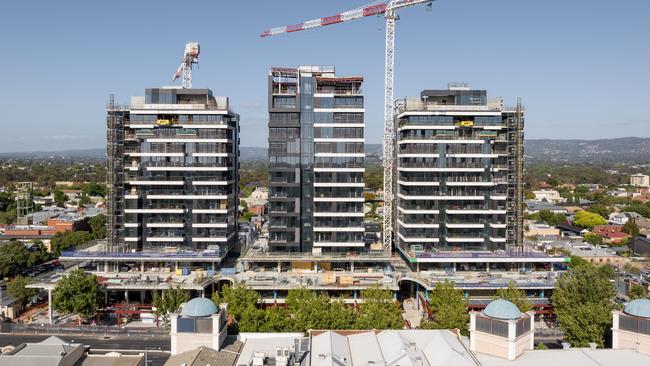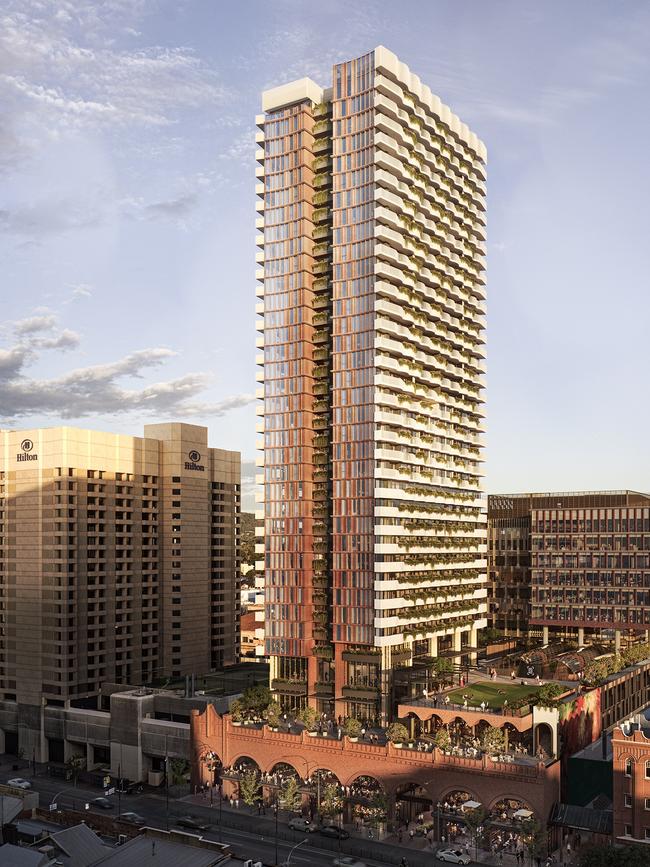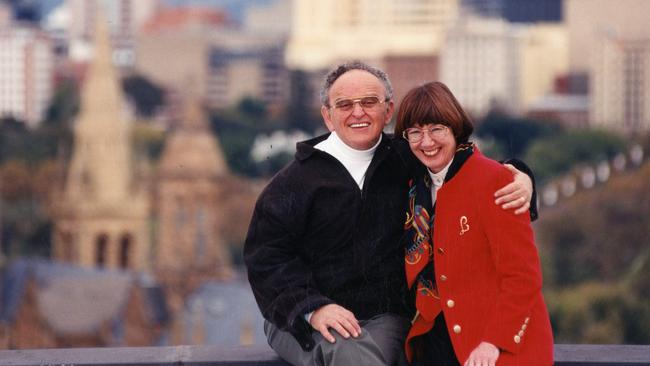Analysis: Grow Adelaide city centre population to ease housing crisis | Paul Starick
Adelaide’s city centre is one of the nation’s least-populated capitals – a travesty during a housing crisis, writes Paul Starick. Have your say.
SA News
Don't miss out on the headlines from SA News. Followed categories will be added to My News.
For decades, North Adelaide’s Le Cornu site was a gaping wound in the heart of the state’s capital.
The block on O’Connell St, glaringly vacant for decades after Le Cornu sold its furniture shop in 1989, became symbolic of the state’s stultifying aversion to development.
This held back Adelaide’s economy, infrastructure and housing, particularly in the period before and after the turn of the millennium.
Having lived in a North Adelaide share house during that time, I was struck during a walk along O’Connell St this week by the transformative change being wrought at the former Le Cornu site.
This is now known as 88 O’Connell – a near-complete complex of 160 apartments across three buildings.
Instead of a blight on the landscape, the O’Connell St site is a light on the hill – an emerging showcase of how Adelaide should look into the future.

Boosting the city population is a big, simple solution to the housing supply crisis that has been sidelined for years, particularly because of a paralysing, ingrained system that treats our state capital more like a heritage museum than the centrepiece of a modern metropolis.
Ask any developer about the difficulties of building quality apartment blocks in the CBD or North Adelaide.
TELL US MORE IN THE COMMENTS
Off the record, they will dumbfound you with almost unbelievable tales of dealing with planning authorities, residents, interest groups and an assorted collection of super NIMBYS that have stymied the city for decades.
There are even unconfirmed stories of Adelaide City Council representatives openly bickering with state ministers, because the latter wanted to overturn obsessions with shadows being cast by apartment towers and whether young or older people were excluded from living in them.
.

The Adelaide City Council area has a tiny population when compared to other state capitals – just 25,026, according to the 2021 census.
It’s not an entirely fair comparison, because of various council sizes, but, for example, Hobart has 55,077 and Perth 28,463.
With CBD attractions like the Adelaide Central Market, Rundle Mall, Gouger St, and Adelaide Oval, Adelaide is ripe for much more apartment living
This has been the unachieved ambition of the Adelaide City Council for decades. There has been plenty of rhetoric about repopulation, but comparatively little game-changing action. There have been exceptions to the rule – particularly 88 O’Connell and the Market Square development.
The latter, as part of an Adelaide Central Market transformation, includes more than 230 apartments – with a number of these earmarked for affordable housing.
Campaigns to repopulate the city have been going on for years. Back in the mid-1990s, when I was reporting on the City Council, the-then Lord Mayor Henry Ninio was championing a campaign to boost resident numbers from 14,000 to about 20,000 by the year 2000.
He presided over a terribly divided council, split between heritage and development factions. Despite the earnest political and rhetorical efforts of the late Mr Ninio and some of his fellow councillors, the campaign objective was not reached.

By the 2001 census, there were 16,456 people living in the Adelaide City Council area, with 2211 families and 7335 private dwellings.
The latest target is to double the population from 26,000 to 50,000 people by 2036.
This is part of a City Plan – Adelaide 2036, which says a “focus on the ‘missing middle’ (medium density housing) will bridge the gap between low and high-density housing across the city”.
In her foreword, Lord Mayor Jane Lomax-Smith (who has seen a few population targets during her successful public life), says: “Everybody in South Australia needs a capital city that works well and delivers opportunities for all citizens.
The onus is on us to leave a legacy.”
Dr Lomax-Smith, a credible and respected leader, is absolutely right. The challenge for state and local authorities is to get moving now if they are to leave a legacy of a thriving, repopulated capital city.
More Coverage
Originally published as Analysis: Grow Adelaide city centre population to ease housing crisis | Paul Starick





